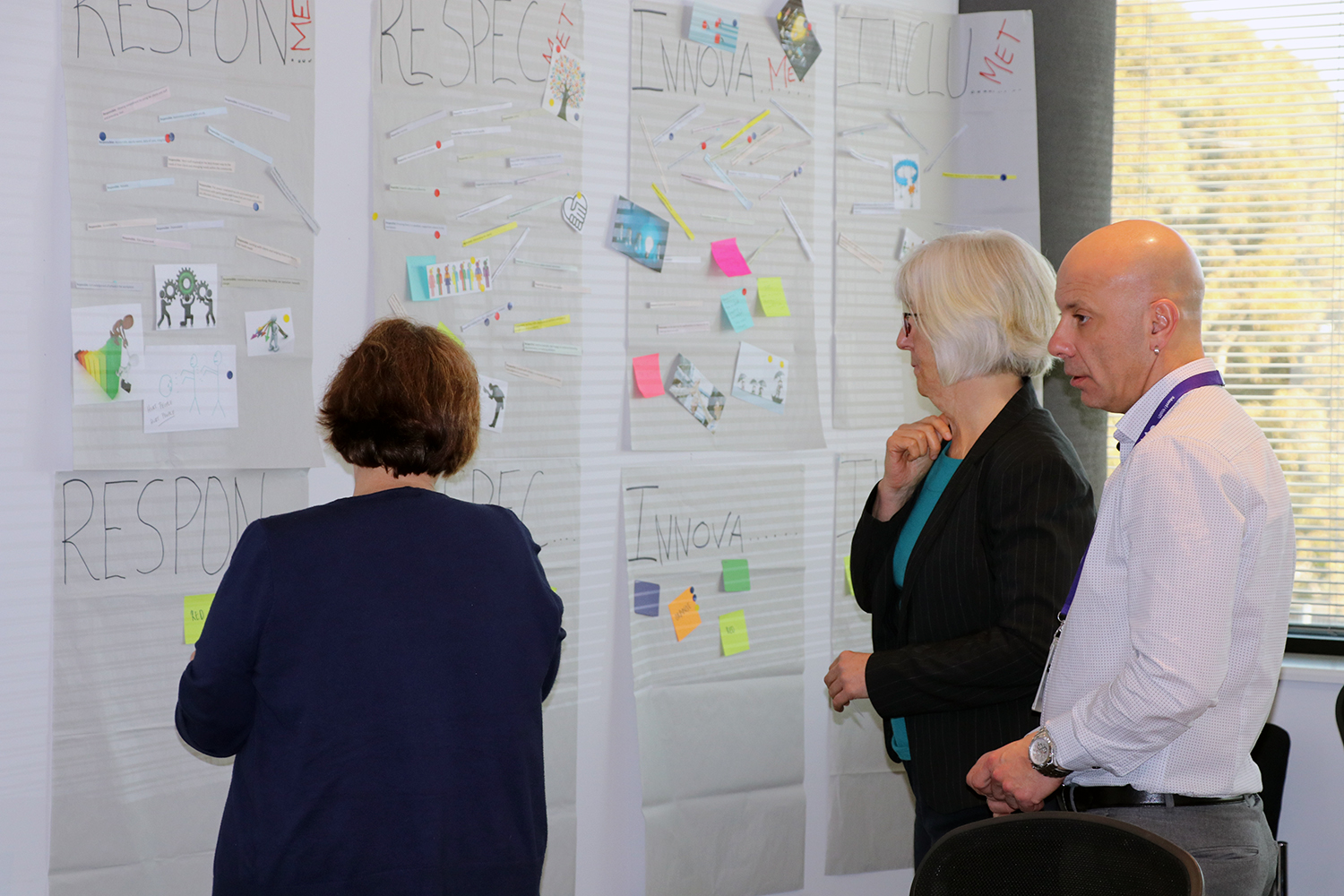Published November 21 2018
Co-design is here to stay and at Merri Health, we're well and truly embracing the benefits that come from participatory design.
Coined in the 60's, the term defines the principles behind good design in which everyone has a role to play in the design of products, services, activities and places.
"Who knows best about what's right for them, than the people impacted by what we're trying to solve?" said Merri Health's marketing and communications manager Viviana Rosas.
With this outlook, our human resources and marketing and communications teams partnered earlier this year to use the principles of co-design to review and revise our values. As a team we explored 'how might we refresh Merri Health's values to better reflect our culture, staff and future direction?'
"It made complete sense that our staff provided input into what makes our organisation unique: what we value and the people that we want to attract to help build on the work we do to better the health and wellbeing of our communities", said Merri Health human resources manager Amie Reed.
Merri Health has used co-design for a range of projects that benefit our community, clients and staff. Moosh, our health and wellbeing education app is a great example of how we partnered with students, parents and teachers, and used co-design principles to create an app that's engaging, educational and fun.
"We're still testing our app with students and children to ensure we get it right. Our next step is to find partners that support our vision to bring it to life," said Viviana.
Amie and Viviana recently shared Merri Health's experience of using co-design to refresh Merri Health's values at the Not For Profit People Conference 2018. Key takeaways included:
- At Merri Health, we focus on five stages of co-design: empathize, define, ideate, prototype and test.
- There are a range of tools that sit under each stage. While it's best practice to use all the tools for thorough insights, don't get caught up in doing this if it's not possible. If you're exploring co-design, choose at least one tool at each stage and start there. There is always room for growth.
- Co-design uses creative thinking. It's important to remember that creative ability does not equal artistic ability: everyone can be creative.
- The first time is always the hardest. If you're looking to get started, the Design Kit by Ideo is a great online tool to explore stages, tools and tips when co-designing.
More information
Learn more about how Merri Health is using co-design and what projects we're working on, using these principles.

